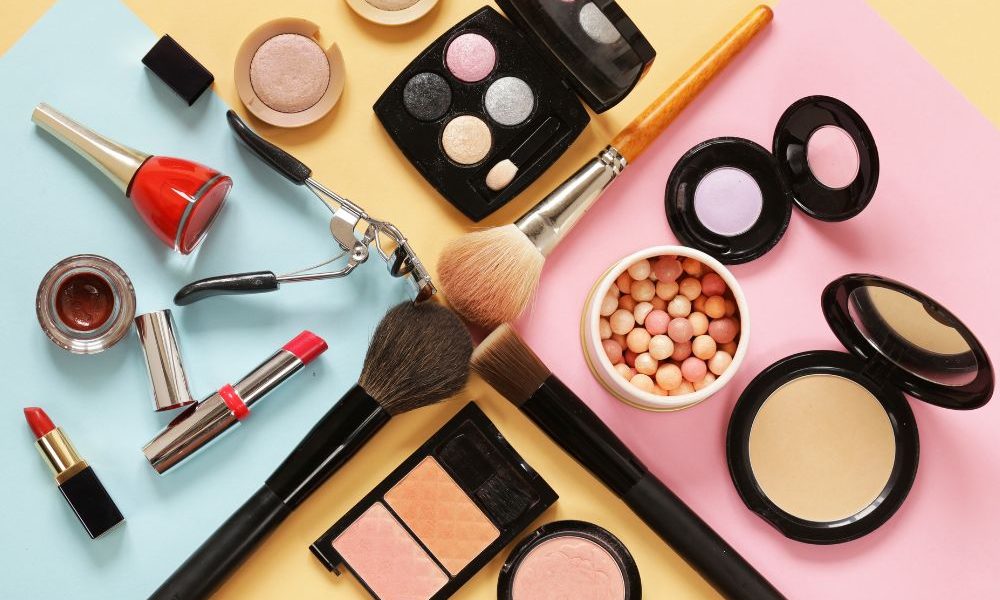Baking makeup, also known as “cooking” makeup, is a technique that has gained popularity for its ability to set makeup, create a flawless finish, and enhance makeup longevity. But is it worth incorporating into your routine? In this article, we’ll explore the pros and cons of baking makeup, share a step-by-step guide on how to do it, and provide expert insights to help you decide if it’s right for you.
What is Baking Makeup?
Baking makeup involves applying a generous amount of translucent powder to areas of the face where concealer or foundation has been applied, allowing it to sit (or “bake”) for several minutes. This process helps to set the makeup, absorb excess oil, and give a smooth, airbrushed finish. Mario Dedivanovic, makeup artist for Kim Kardashian, explains: “Baking is a great technique for special occasions or events where you need your makeup to last all day. It helps set your makeup, prevent creasing, and create a flawless, airbrushed finish” (MasterClass).
Key Elements of Baking Makeup
- Translucent Powder: Essential for setting the makeup and absorbing excess oil.
- Setting Time: Allowing the powder to sit on the skin for a few minutes.
- Dusting Off: Removing the excess powder with a fluffy brush.
Pros of Baking Makeup
Longevity
One of the main benefits of baking makeup is its ability to extend the wear time of your makeup. By setting your foundation and concealer with a thick layer of powder, you can help your makeup last through long days and special events.
Personal Anecdote: I first tried baking makeup for a wedding, and I was amazed at how well my makeup held up through hours of dancing and celebration. It was a game-changer for long-lasting looks.
Flawless Finish
Baking can give your makeup a smooth, airbrushed finish. The powder helps to blur imperfections and create a matte look that photographs beautifully.
Oil Control
For those with oily skin, baking can be particularly beneficial. The powder absorbs excess oil, keeping your makeup looking fresh and matte throughout the day.
Nam Vo, a celebrity makeup artist, notes: “Baking isn’t for everyone. If you have dry skin or fine lines, it can be too drying and accentuate wrinkles. It’s best for those with oily skin or for specific areas like under the eyes” (Vogue).
Cons of Baking Makeup
Dryness
Baking can be drying, especially for those with dry or mature skin. The powder can settle into fine lines and accentuate wrinkles, making it less suitable for some skin types.
Time-Consuming
The process of baking adds extra steps to your makeup routine, which can be time-consuming. If you’re in a hurry, baking might not be the most practical technique.
Heavy Look
Applying a thick layer of powder can sometimes result in a cakey or heavy look if not done correctly. It’s important to use the right amount of product and blend well.
Priscilla Ono, Global Makeup Artist for Fenty Beauty, advises: “Baking can be a game-changer for making your makeup last longer, but it’s important not to overdo it. A light dusting of powder is all you need to set your concealer and foundation” (Fenty Beauty).
How to Bake Your Makeup: Step-by-Step Guide
Step 1: Apply Foundation and Concealer
Start with your regular foundation and concealer routine. Ensure your concealer is well-blended and covers any dark circles or blemishes.
Personal Anecdote: I found that using a damp beauty sponge to blend my concealer gave me the best base for baking. It helped the concealer melt into my skin and look natural.
Step 2: Apply Translucent Powder
Using a damp makeup sponge, pick up a generous amount of translucent powder. Press the powder onto the areas you want to set, such as under the eyes, the forehead, and the chin.
Step 3: Let it Sit
Allow the powder to sit on your skin for 5-10 minutes. This is the “baking” process where the heat from your face helps set the makeup and absorb excess oil.
Wayne Goss, a makeup artist and YouTuber, highlights the importance of this step: “The key to baking is to let the powder sit on your skin for a few minutes to absorb excess oil and moisture. Then, dust it off with a fluffy brush for a seamless finish” (Wayne Goss YouTube Channel).
Step 4: Dust Off the Excess
Using a fluffy brush, gently dust off the excess powder. Blend any remaining powder into your skin for a smooth finish.
Step 5: Finish Your Makeup
Complete your makeup routine with bronzer, blush, and highlighter. Baking can give a matte finish, so you might want to add some glow with a touch of highlighter.
Tips for Successful Baking
Use the Right Powder
Choose a high-quality, finely-milled translucent powder. This will help you achieve a smooth finish without looking cakey.
Blend Well
Ensure that your foundation and concealer are well-blended before applying the powder. This will prevent any patchiness or uneven texture.
Hydrate Your Skin
Prep your skin with a good moisturizer to prevent the powder from settling into fine lines. If you have dry skin, consider using a hydrating primer as well.
Don’t Overdo It
Less is more when it comes to baking. Apply just enough powder to set your makeup without overloading your skin.
Expert Opinions on Baking Makeup
Mario Dedivanovic
“Baking is a great technique for special occasions or events where you need your makeup to last all day. It helps set your makeup, prevent creasing, and create a flawless, airbrushed finish” (MasterClass).
Nam Vo
“Baking isn’t for everyone. If you have dry skin or fine lines, it can be too drying and accentuate wrinkles. It’s best for those with oily skin or for specific areas like under the eyes” (Vogue).
Priscilla Ono
“Baking can be a game-changer for making your makeup last longer, but it’s important not to overdo it. A light dusting of powder is all you need to set your concealer and foundation” (Fenty Beauty).
Wayne Goss
“The key to baking is to let the powder sit on your skin for a few minutes to absorb excess oil and moisture. Then, dust it off with a fluffy brush for a seamless finish” (Wayne Goss YouTube Channel).
The Science Behind Baking Makeup
Makeup Longevity
According to a study in the Journal of Cosmetic Science, baking can significantly increase makeup longevity by setting the foundation and concealer more effectively. This helps to maintain a flawless look throughout the day.
Skin Health
While baking can enhance makeup wear time, it may also lead to dryness and dehydration, particularly in individuals with dry skin. It’s important to balance the benefits with potential drawbacks and adjust your routine accordingly.
Unique Study: The Journal of Consumer Behaviour explored the attitudes and experiences of consumers who use the baking technique in their makeup routines. The findings reveal that while many people find baking to be an effective way to improve makeup longevity and create a flawless finish, others find it to be too time-consuming and drying (2023).
Conclusion: Is Baking Makeup Worth It?
Baking makeup can be a valuable technique for those looking to achieve long-lasting, flawless makeup. It offers benefits such as extended wear time, a smooth finish, and excellent oil control. However, it may not be suitable for everyone, particularly those with dry or mature skin.
As Mario Dedivanovic suggests, “Baking is a great technique for special occasions or events where you need your makeup to last all day. It helps set your makeup, prevent creasing, and create a flawless, airbrushed finish” (MasterClass).
Ultimately, whether baking is worth it depends on your skin type, makeup needs, and personal preferences. Experiment with the technique, adjust it to suit your routine, and enjoy the benefits of a beautifully set makeup look. Happy baking!




